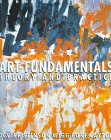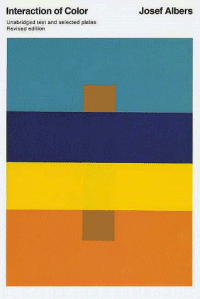 |

Celtic Art: From Its Beginnings to the Book of Kells
| by
Ruth and Vincent Megaw; Pub.
Thames and Hudson, New York, 2001
Minimum reading level: Grade 10
Useful for beginners to experts alike.
|
Delightful to read and profusely illustrated in colour and b & w, this book is essential for anyone interested in Celtic art, and would also be very useful for those who study Celtic archaeology, religion or history. The writing style is clear and the reading flow is uninterrupted by footnotes or endnotes. At the end of the book is an excellent bibliography arranged thematically for each chapter. For example, the introduction has a bibliography arranged for thirteen themes, including Iron Age Europe, journals, horses and chariots, methods and techniques, importance of the Head to Celts, catalogues, and so on. There is also a very good index.
From an academic point of view, there is barely a paragraph that could not inspire further thought or even original research. The Megaws present the reader with the varying ideas about some aspects of the subject when the current evidence is sparse. Although the writers are leading experts in this field, we never feel that we are being lectured to in a pedantic fashion, but instead are sharing with them the ongoing discovery of an often-elusive art form. If one could have only one book on Celtic art, this should be that book.
This is a revised and expanded edition of the 1989 title presenting not only new discoveries of Celtic art, but recent thoughts about the subject generally.
The production quality of the book is high Ė a permanent paperback with hard card covers printed on heavy coated stock and sewn in signatures.
Reviewed by John Hooker.
|
 |

Art Fundamentals: Theory and Practice
|
by Otto G. Ocvirk, Philip R. Wigg, Robert O. Bone, David L. Clayton, Robert E. Stinson |
While this is not actually a book on the Celts or their art, it is recommended for those who have no knowledge or appreciation of the subject of art and visual design, or for those who would wish to write on the subject. This title is not needed for the comprehension and enjoyment of the featured books on Celtic art, but if you cannot understand what is meant by design terms like "negative space", you might want to buy this book. Celtic art is sophisticated, and to get the most out of it, a general understanding of art is advisable. Don't expect to find anything in this book about Celtic art, even in the time-line of western art.
|
|
Albers: Interaction of Color:
CD-ROM!
Interaction of Color
A unique historical experience - see the original colour experiments done by Albers into the dynamic interaction of colours.

|
|
|

Interaction of Color: The Book
|
Albers' Interaction of Color demonstrates the optical phenomenon of "simultaneous contrast" as never shown before, though described by Chevreul and Itten. This book shows you how one color can appear as two and how different colors can appear alike
|
| in varying settings. More |

Figures of Speech: Sixty Ways to Turn a Phrase
|
by Arthur Quinn.
"We was robbed!" was Joe Jacobs' exclamation into the ring announcer's microphone when he learned the boxer he managed had not been awarded the win. This is the first example of a figure of speech in this slim, pithy little volume... More
|
|
 |

Early Celtic Art in the British Isles
|
by E. M. Jope
Pub: Oxford University Press, Oxford, 2000
Minimum reading level: Grade 12/1st year university
|
E. M. Jope was Paul Jacobsthalís assistant and worked with him on Early Celtic Art, a two-volume corpus on the Celtic Art of Europe. Early Celtic Art in the British Isles follows in this tradition and is the only corpus of British Celtic art since Sir Cyril Fox published Pattern and Purpose in 1958.
This is thus a highly important work and is the crowning achievement of the life of E. M. Jope. Sadly, he passed away before the book went to print. No serious student of Celtic art or the Iron Age archaeology of Britain can afford to be without this impressive work. If Jacobsthalís work is anything to go on, then once Early Celtic Art in the British Isles goes out of print, it will soon be virtually impossible to find.
I first learned of this work before it was completed, about ten years ago, in correspondence with the author. Martyn Jope told me he "was finishing" the book, so every year since then I inquired about the publication date. Like a carrot in front of my nose, the bookshops said it would be out "next year". Eventually it was published and I bought a copy.
It was worth the wait. The first volume consists of the text: a discussion of the subject over nine chapters; the tenth chapter includes an annotated list of the items illustrated and an anatomy of insular early Celtic ornament. There are three appendices, including an important element analysis of the Battersea Shield red "enamel". These are followed by an extensive bibliography, a very useful glossary of terms and finally, and Index of Places. The second volume consists of 320 plates of the artifacts, most often with many illustrations to each plate. The illustrations consist of photographs and line drawings. Following in the tradition of Jacobsthal, Jope then provides over nine hundred line drawings of the patterns found on insular Celtic art arranged over another 12 plates.
The books are large format, and should be read at a large desk or table where you can have both volumes open to read the text and refer to the pertinent illustrations. Despite the importance of this work, and the level of understanding that it imparts, Jopeís writing style is not only easy to read, but also it sparkles. His enthusiasm for his subject is infectious.
Even though the set is not cheap, no serious scholar of the British Iron Age will be without it. Donít expect to find it at your local library. With the ever-increasing costs of books and budgetary restraints, many libraries will not carry this title. This will also impact the availability of the title through inter-library loans. If you plan to write anything about the material culture of the British Iron Age you will need this work.
Reviewed by John Hooker.
|
 The Elements of Color
The Elements of Color
| by Johannes Itten and Faber Birren, ed.
This popular book, summarizing Itten's theories, is often used in art schools. More |
|



